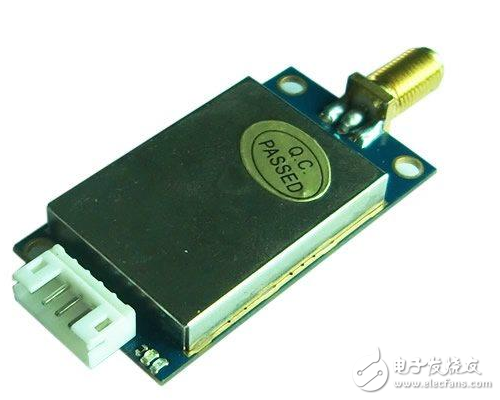The RS-485 bus interface is a commonly used serial port, which has the advantages of convenient network connection, good anti-interference performance and long transmission distance. The RS-485 transceiver uses balanced transmit and differential receive, so it has the ability to reject common-mode interference. Plus the transceiver's high sensitivity, it can detect voltages as low as 200mv, and reliable communication can reach several kilometers. Using RS-485 bus networking, only a pair of twisted pairs can realize multi-system networking to form a distributed system, simple equipment, low price and long communication distance.

485 communication program of 51 single chip microcomputer
#ifndef __485_C__ #define __485_C__
#include 《reg51.h》
#include 《string.h》
#define unsigned char uchar
#define unsigned int uint
/* Communication Command*/
#define __ACTIVE_ 0x01 // The host asks if the slave exists
#define __GETDATA_ 0x02 // The host sends a read device request
#define __OK_ 0x03 // Answer from the slave
#define __STATUS_ 0x04 // The slave sends device status information
#define __MAXSIZE 0x08 // Buffer length
#define __ERRLEN 12 // Any communication frame longer than 12 indicates an error
Uchar dbuf[__MAXSIZE]; // This buffer is used to save device status information
Uchar dev; // This byte is used to save the local device number
Sbit M_DE = P1^0; // drive is enabled, 1 is valid
Sbit M_RE = P1^1; // Receiver enable, 0 is valid
Void get_status(); // Call this function to get device state information, the function code is not given
Void send_data(uchar type, uchar len, uchar *buf); // send data frame
Bit recv_cmd(uchar *type); // Receive host command, host request contains only command information
Void send_byte(uchar da); // This function sends a byte in a frame of data, called by the send_data() function
Void main() {
Uchar type; uchar len;
/* system initialization*/
P1 = 0xff; // read the local device number
Dev = (P1》》2);
TMOD = 0x20; // Timer T1 uses working mode 2
TH1 = 250; // set the initial value
TL1 = 250;
TR1 = 1; // start timing
PCON = 0x80; // SMOD = 1
SCON = 0x50; // Working mode 1, baud rate 9600bps, allowing reception
ES = 0; // turn off the serial port interrupt
IT0 = 0; // External interrupt 0 uses level trigger mode EX0 = 1; // Turns on external interrupt 0 EA = 1; // Turns on interrupt
/* main program flow */
While(1) // main loop {
If(recv_cmd(&type) == 0) // A frame error occurs or the frame address does not match the local address, and the current frame is discarded and returned.
conTInue; switch(type) {
Case __ACTIVE_: // The host asks if the slave exists
Send_data(__OK_, 0, dbuf); // Send a response message, where the contents of buf are not used
Break;
Case __GETDATA_: len = strlen(dbuf);
Send_data(__STATUS_, len, dbuf); // Send device status information
Break; default:
Break; // The command type is incorrect, returning after dropping the current frame
}
}
}
Void READSTATUS() interrupt 0 using 1 // Generates an external interrupt 0 indicating that the device state has changed. This function uses register bank 1
{
Get_status(); // Get the device status information and store it in the memory area pointed to by dbuf. The last byte of the data is set to 0 to indicate the end of the data.
}
/* This function receives a frame of data and detects it. The function will return * function parameter type to save the received command word regardless of whether the frame is wrong or not.
* When a data frame error is received or its address bit is not 0 (non-host sends a frame), the function returns 0, otherwise it returns 1 */
Bit recv_cmd(uchar *type) {
Bit db = 0; // this bit is set when the last byte received is 0xdb
Bit c0 = 0; // when the last byte received is 0xc0, this bit is set.
Uchar data_buf[__ERRLEN]; // save the received frame
1200 Puffs Disposable ecig have a completely enclosed design, reducing the need for charging and replacing cartridges. The no-charge design also reduces the occurrence of faults. It is understood that with rechargeable e-cigarettes, each cartridge needs to be charged at least once and the battery efficiency is extremely low, while the design of disposable ecig can solve this problem very well.
1200 Puff E-Cigarette,1200 Puff E-Cigarette For Sale,Best 1500 Puff E-Cigarette,Best 1200 Puff E-Cigarette For Sale
Shenzhen E-wisdom Network Technology Co., Ltd. , https://www.healthy-cigarettes.com